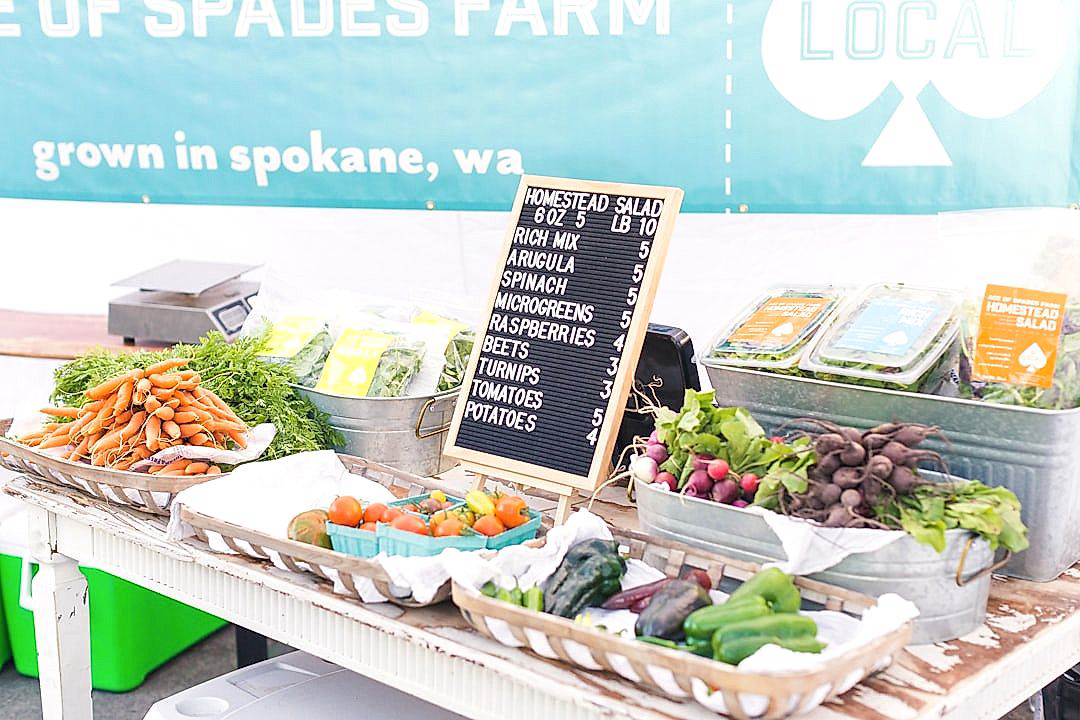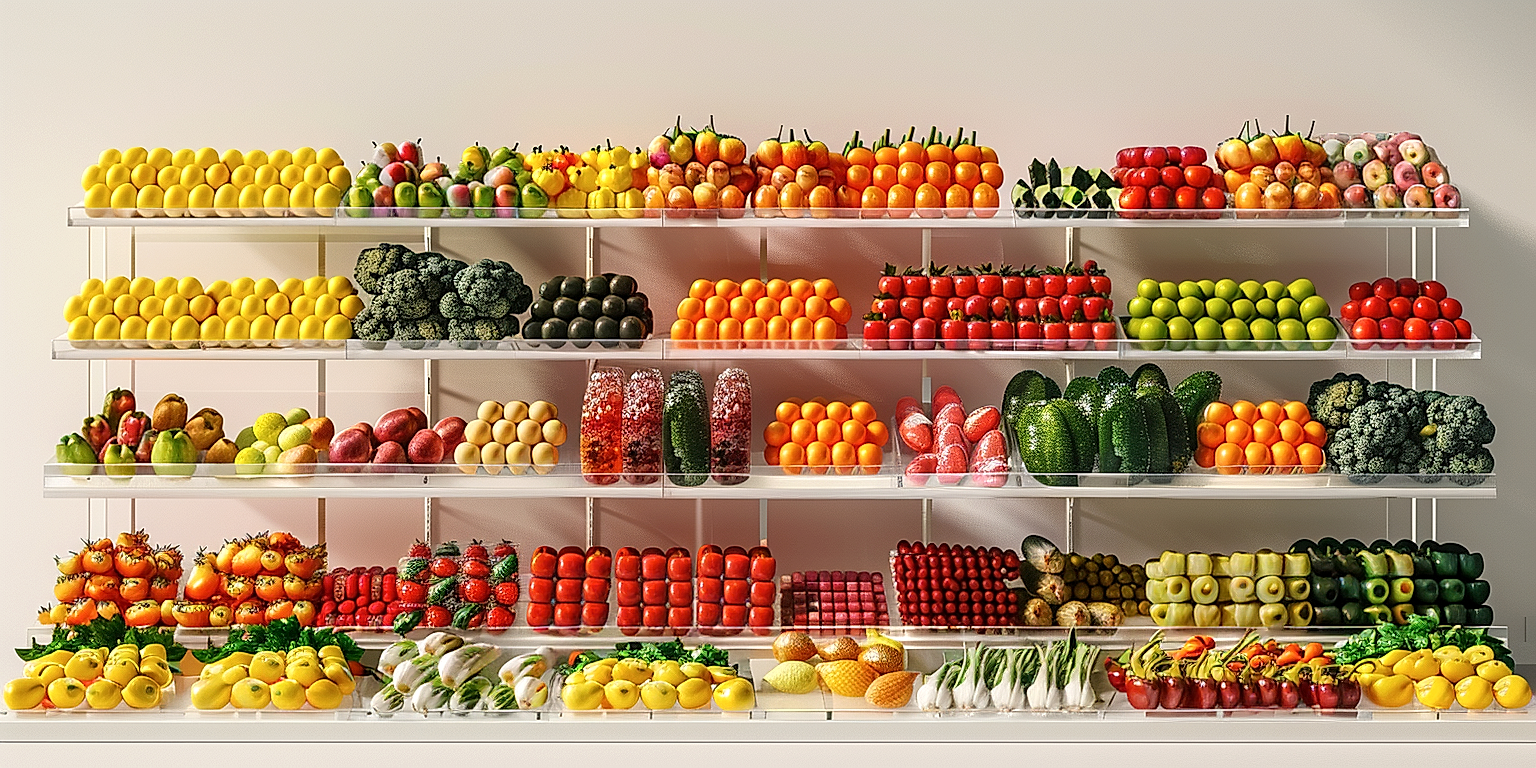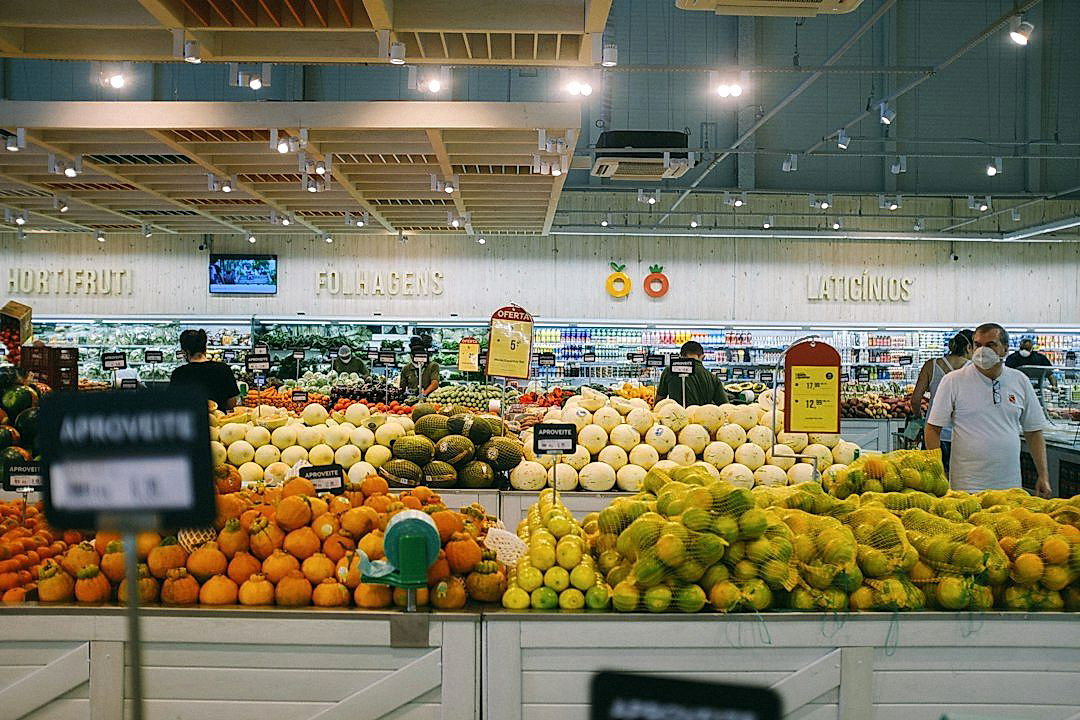The nexus between health, wellness and consumer behavior is continually reshaping the landscape of produce retail.
In an era where customers are more aware and deeply invested in their wellbeing, this industry cannot overlook the evolving tastes and preferences of this burgeoning health-conscious population.
These factors not only influence buying patterns but also catalyze new market opportunities for retailers.
This piece seeks to delve deeper into the pertinent trends and their implications for the sector.
We aim to provide critical insights on how to effectively navigate this dynamic terrain.
Above all, the discussion will harness its focus on empowering retailers in aligning their strategies with consumer needs.
Health & Wellness Trends Affecting Produce Retail
1. Increased demand for organic and non-GMO produce
There is a growing consciousness among consumers about what they eat and where their food comes from.
As such, the demand for organic and non-GMO produce in retail markets has seen a significant increase over the past few years.
Consumers are gradually recognizing the benefits of a healthier diet and are willing to spend more for products that are organic, non-GMO, or those produced under ethical farming practices.
It is essential to note that organic produce is grown without the use of synthetic pesticides or chemical fertilizers, while non-GMO stands for non-genetically modified organisms, meaning the seeds planted were not engineered in a lab and are natural.
The health benefits associated with consuming such produce have been a significant driving factor for this trend.
Organic and non-GMO food items are perceived to contain more nutrients, are better for the environment, and do not contribute to the growing issue of antibiotic resistance in the medical realm.
Concerns about personal health and the environmental cost of conventional farming practices have also driven the shift to organic and non-GMO food consumption.
This consumer behavior reflects a broader global shift towards more sustainable, ethical, and health-conscious consumer choices.
In light of this development, produce retailers have a substantial opportunity to meet this growing demand and leverage it to drive their sales.
More and more retailers are now dedicating specific sections of their stores to organic and non-GMO produce.
Online grocery platforms are also incorporating filters to help customers easily find organic and non-GMO options amid the wide array of products available.
The increase in demand for organic and non-GMO produce is, therefore, influencing not just what is available in retail stores, but also how it is marketed, displayed, and sold.
Produce retailers and grocery stores have thus been required to adapt to these health and wellness trends.
The rise in popularity of organic and non-GMO items reflects the evolving consumer preferences and demand patterns that are shaping the global retail landscape.
It also hints at the future of food retail, where health and wellness could dictate the type of produce majority of consumers will prefer to buy.
Given that consumers’ preferences, attitudes, and values are what shape the retail market, this trend will likely endure, and retailers should position themselves accordingly.
2. Growing Interest in Plant-Based and Vegan Diets
The recent years have seen a significant increase in the interest concerning plant-based and vegan diets. This trend has been largely influenced by rising concerns about personal health, animal welfare, and the impact of the food industry on the environment.
People are becoming increasingly aware of the benefits of these diets which include weight management, disease prevention, and the promotion of overall well-being.
The sudden growth in veganism is significantly impacting the produce retail industry, leading to the increased demand for fruit and vegetables.
The shift towards these diets has also increased the demand for plant-based protein alternatives like pulses, legumes, and soy products.
Produce retailers have begun innovating in response to this trend, offering a wider range of plant-based and vegan-friendly products.
Further, plant-based and vegan items are now being prominently featured in stores, with entire sections dedicated to these dietary preferences.
Many retailers are also expanding their offering of plant-based and vegan ready meals in response to the demand for convenient, healthy options.
This trend has also led to an increase in the variety of vegetables being offered in stores, particularly those traditionally used in vegan cuisine.
Retailers are learning that catering to this trend is not just about stocking more vegetables, but also about offering a variety of products that appeal to vegan and plant-based customers.
Customers seeking plant-based or vegan options may also value sustainable and ethical food sourcing, further affecting how retailers need to source their produce.
Retailers are therefore having to rethink their supply chains, building relationships with farmers and suppliers who can meet these ethical demands.
Another aspect retailers must consider is the packaging and presentation of their plant-based and vegan offerings, as customers in this market value sustainability in all aspects of the purchasing process.
As the trend of plant-based and vegan diets continues to grow, it’s likely we’ll continue to see innovation and adaptation on the part of the produce retail industry.
This ongoing evolution of the industry is not only an opportunity to cater to a growing market, but also a chance for retailers to lead in the movement towards more sustainable and health-conscious food choices.
With plant-based and vegan diets being more than just a fad, produce retailers must effectively adapt their strategies to suit the changing demands of consumers.
3. Popularity of meal prep and pre-packaged fruits/veggies
In an era where time-saving strategies are crucial, the popularity of meal prep and pre-packaged fruits and veggies continues to soar.
Health-conscious individuals are increasingly valuing the convenience of meal prep services, that offer pre-packaged fruits and vegetables.
This allows people to maintain a balanced diet without the hassle of peeling, slicing, and preparing produce daily.
Receiving a peeled orange, sliced mango, or pre-packaged salad mix in a box is now an accepted part of many people’s meal preparation regimes.
The trend of pre-packaged fruits and vegetables is not confined to homes but stretches to schools, catering facilities, and workplaces too, as they offer a hassle-free alternative to traditional food preparation.
Pre-packaged fruits and veggies make eating healthy both easy and convenient, which is a major draw for busy professionals.
Whilst reducing the time spent in the kitchen, pre-packaged fruits and vegetables also cut down on the waste often associated with buying fresh produce.
They ensure that consumers receive the exact portion sizes that they require, mitigating food waste.
Pre-packaged items are also becoming increasingly popular due to concerns around food safety.
Bags of salad, for example, are thoroughly washed and prepped under strict hygienic conditions.
Similar to meal prep, pre-packaged fruits and vegetables can also be customized to suit dietary restrictions or personal preferences.
People can opt for pre-cut fruits with minimal talk content, diabetic-friendly veggies, or be guided by recipes included in their meal prep plans.
This trend is also encouraging more people to incorporate a greater variety of fruits and vegetables into their diet.
Fruits and vegetables that may have seemed daunting to prepare, like artichokes or mangoes, are now more accessible, thus increasing inclusivity in the produce market.
Retailers who offer pre-packaged fruits and vegetables are seeing higher sales, drawing a wider consumer base to their stores.
So, in addition to supporting individual health goals, the popularity of meal prep and pre-packaged fruits and veggies is transforming the produce retail industry.
4. Rise in locally sourced and farm-to-table foods
The health and wellness trend has been significantly impacting the produce retail sector and, recently, there has been a marked rise in the demand for locally sourced and farm-to-table foods.
This has largely been influenced by an increased consumer awareness about the importance of eating fresh and wholesome foods that have travelled less and hence have less carbon footprint.
When it comes to food consumption, a rising number of consumers are now prioritizing quality, freshness, and sustainability over cost and convenience
In fact, the farm-to-table trend is not merely about locality, but it also implies a strong commitment to sustainability and environmental stewardship.
Studies have highlighted that locally-grown produce is often fresher and contains higher amounts of nutrients because it is sold closer to the time of its harvest.
This is a stark contrast to commercially-grown fruits and vegetables that are often harvested early to withstand long-distance transportation and hence, may be deficient in certain vital nutrients.
Sourcing directly from farmers also tends to support local economies, drawing a direct connection between the consumer and the grower.
Restaurants and food service providers are increasingly getting into the act by sourcing their ingredients locally and boasting the farm-to-table tag on their menus.
Further, this surge in locally sourced and farm-to-table foods has created a significant opportunity for produce retailers to expand their offering and gain a competitive edge in the market.
Moreover, this trend is also showing no signs of subsiding, as more and more customers are getting educated about the health and environmental benefits of locally sourced foods.
In essence, the rise in locally sourced and farm-to-table foods indicates a new era in the food culture, wherein the emphasis is on the origin, quality, and freshness of the food, rather than the price.
Today, consumers are willing to pay a premium for locally sourced products, valuing the quality and transparency that comes along with these foods.
This shift in perception is reshaping the produce retail industry, creating opportunities for retailers to innovate and create new business models centered around freshness, locality, and sustainability.
It’s clear that the rise of locally sourced and farm-to-table is representative of the larger global shift towards healthy eating and sustainable living.
As a result, it’ll be crucial for businesses to stay ahead of this curve, and strategically plan their operations and offerings to cater to this ever-growing demand.
Clearly, the drive for farm-to-table sourcing is a testament to the evolving consumer consciousness about food and health, and its effect on the overall produce retail industry is substantial.
5. Higher Consumption of Superfoods for Health Benefits
One of the major trends currently shaping the produce retail industry is the increased consumption of superfoods due to their perceived health benefits.
This trend is primarily driven by consumers’ increasing health consciousness and desire to prevent avoidable health issues through nutritious dietary choices.
Superfoods, such as blueberries, kale, chia seeds, and quinoa, are well-known for their rich nutritional profiles.
They are densely packed with important vitamins, minerals, fiber and antioxidants, which contribute to maintaining good health, boosting the immune system, and preventing many diseases.
>Being packed with antioxidants, superfoods can fight off harmful free radicals in the body and reduce inflammation, thereby playing a key role in disease prevention and overall wellness.Superfoods are not just healthy alternatives to regular food, but they also have the potential to address specific health concerns such as heart health, gut health, weight management, and more.
For example, avocados and nuts, which are rich in healthy fats and fiber, can help manage cholesterol levels and support heart health.
Similarly, probiotics found in fermented foods like kimchi and sauerkraut support gut health and digestive wellness.
The versatility of superfoods in terms of their use in a variety of recipes, is another factor driving their increased consumption.
Diverse preparation choices, from smoothies and salads to main courses and desserts, have made it easier for consumers to add these power-packed foods to their diets.
The growing popularity of superfoods has prompted retailers to stock more of these products and create dedicated ‘superfood’ sections in their stores.
This, in turn, has made these nutrient-dense foods more accessible to consumers, further driving their increased consumption.
Produce retailers are also promoting these superfoods through marketing campaigns highlighting their health benefits,
Online and offline cookery shows and blogs that leverage these superfoods in their recipes also play a significant role in promoting their consumption.
The higher consumption of superfoods marks a significant shift in consumer patterns in the produce retail industry, with the focus now being on quality and nutritional value rather than just price and availability.
The Bottom Line
The agricultural industry is experiencing noteworthy shifts in consumption trends that are causing suppliers to adapt production and distribution methods.
There is a substantial rise in interest for organic and non-GMO produce as consumers progressively seek healthier, cleaner eating options.
Furthermore, the growth in plant-based and vegan diets necessitates the increased provision of a wider variety of fruits and vegetables.
Modernization in lifestyle and preference for convenience has propelled the trend for meal preparation and pre-packaged fruits and vegetables, streamlining consumers’ culinary processes.
The preference for locally sourced and farm-to-table foods also highlights the desire for fresher, quality foods that sustainability supports local economies.
Lastly, superfoods consumption is on a stratospheric rise as awareness grows about their numerous health benefits.
Changes in the industry reflect the evolving consumer consciousness towards health, convenience, and the environment, a perception that will continue to shape the future of food economies.




